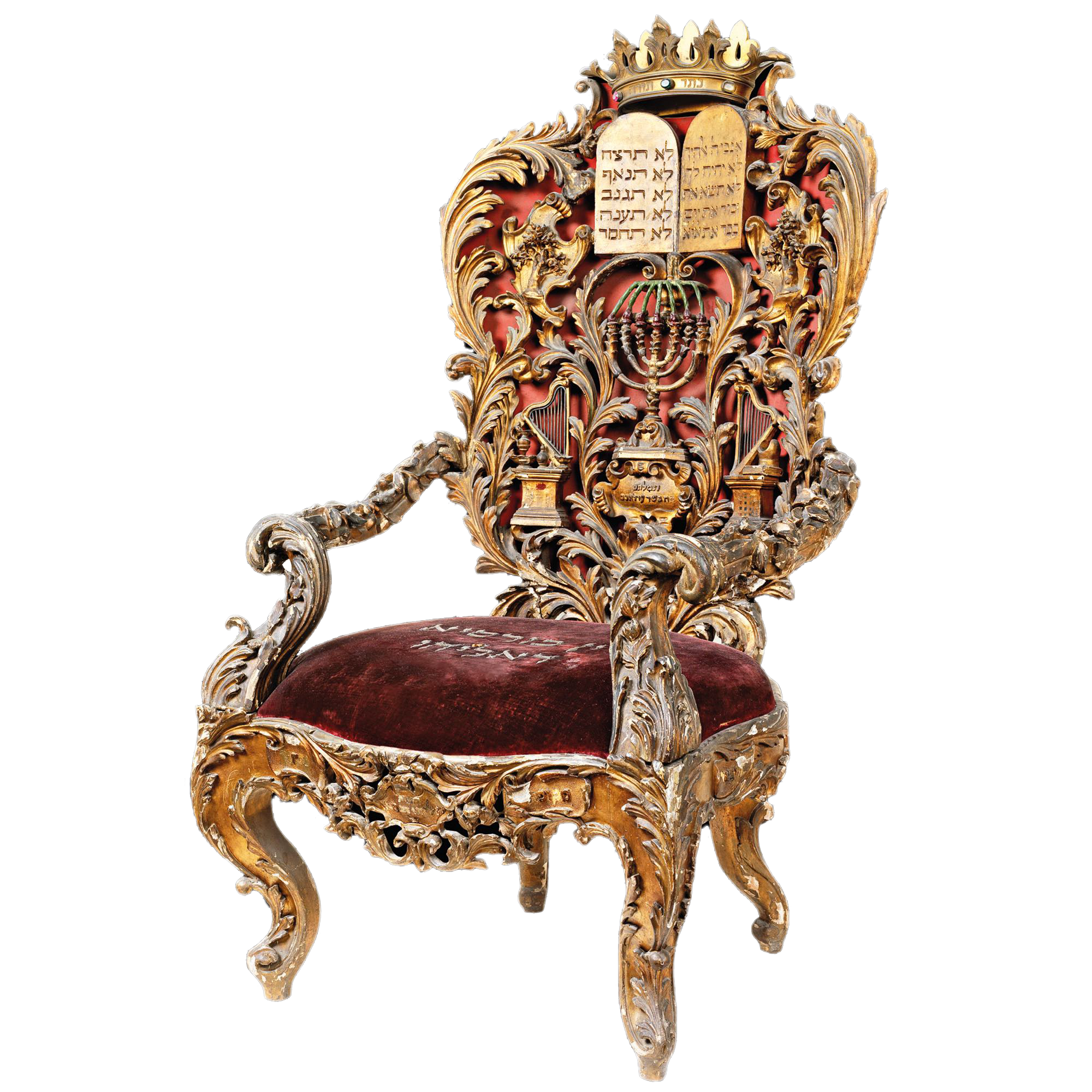
Wolne krzesło lub ławka przygotowane dla proroka Eliasza.

W większości społeczności krzesło Eliasza jest wystawiane podczas ceremonii obrzezania w synagodze lub w domu. Jeśli są dwa miejsca, jedno z nich jest przeznaczone dla sandaka trzymającego dziecko, a drugie dla Eliasza. W niektórych społecznościach, takich jak Buchara i Irak, puste krzesło pozostawiono dla Proroka Eliaszaww szałasie na święto Sukot (suka). W Hrabstwie Venaissin (południowa Francja) jest to miniaturowy fotel wystawiony wysoko. Ławka jest typowa dla społeczności Nadrenii (Alzacja, Niemcy, Szwajcaria).
Jacoby, Ruth. “The Small Elijah Chair.” Journal of Jewish Art, ed. Aliza Cohen-Mushlin, vol. 18: Sepharad, 1992, pp. 70-77.
Jacoby, Ruth. “Ma Bein Kiseh Ha-sandak Le-kiseh Eliyahu [The Relation between the Elijah’s Chair and the Godfather’s Chair].” Rimonim, ed. Shalom Sabar, vol. 5, 1997, pp. 43-53.
Juhasz, Esther, ed. Sephardi Jews in the Ottoman Empire: Aspects of Material Culture. Jerusalem: The Israel Museum, 1990, pp. 262-67.
Leben, Yemima. “Minhagim Ha-kshurim Be-kiseh Eliyahu Be-kerev Yehudei Drom Tunisia [Customs Pertaining to the Elijah’s Chair in the Jewish Communities of Southern Tunisia].” Rimonim, ed. Shalom Sabar, vol. 5, 1997, pp. 54-55.
Perugia Sztulman, Gioia. “A Sandak’s Chair from Mantua: An Historical, Minhagic and Artistic Evaluation.” Studia Rosenthaliana, vol. 37, Peeters, 2004, pp. 55–75.
Sabar, Shalom. “Childbirth and Magic: Jewish Folklore and Material Culture.” Cultures of the Jews: A New History, ed. David Biale, New York: Schocken Books, 2002, pp. 670-722.
Sabar, Shalom. “Prophet Elijah Visits the Circumcision Ceremony: A Rare Elijah Chair from Early Nineteenth Century Venice.” La nascita nella tradizione ebraica: Birth in Jewish Tradition, ed. Silvia Guastalla, Livorno: Belforte Salomone, 2005, pp. 98-123.
Wybierz język